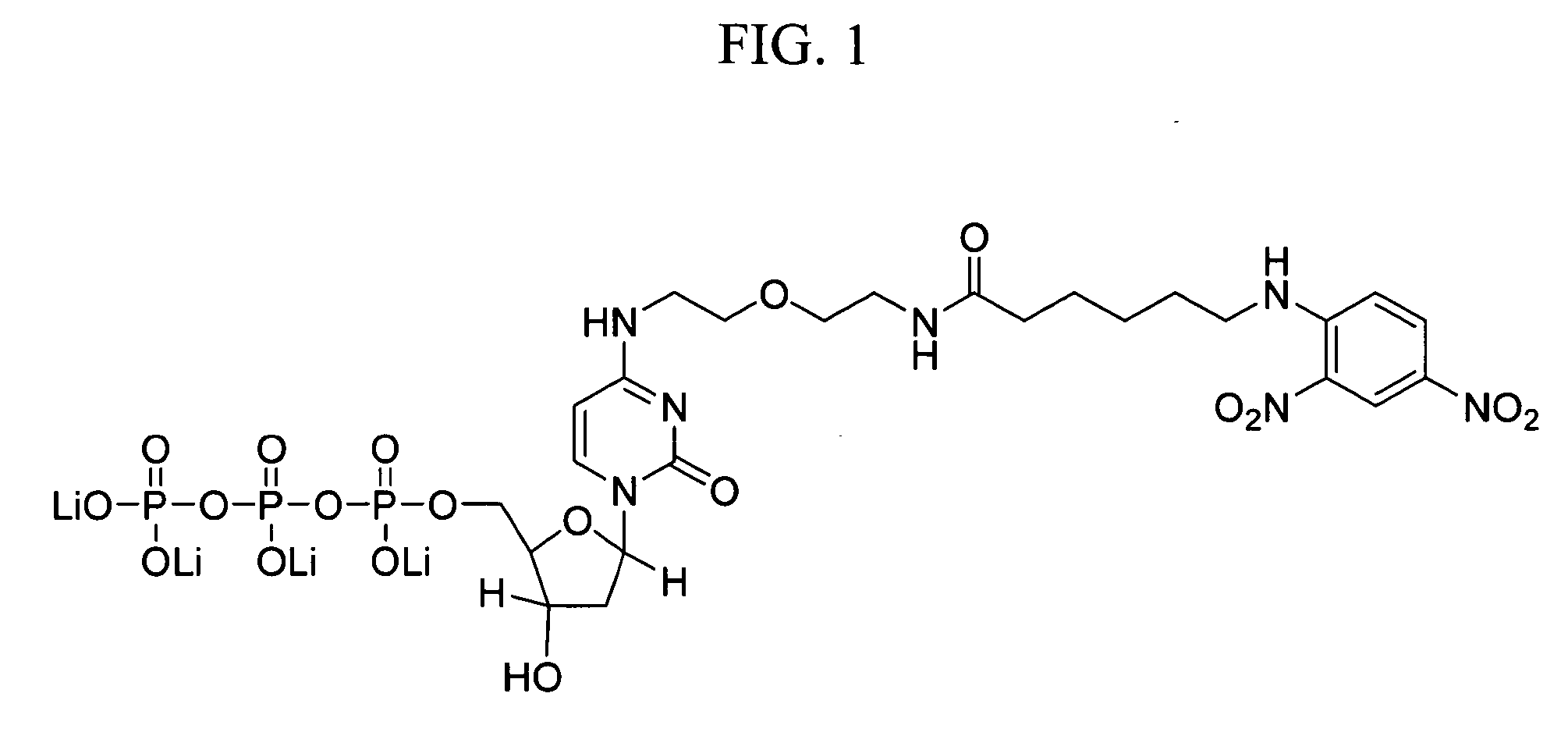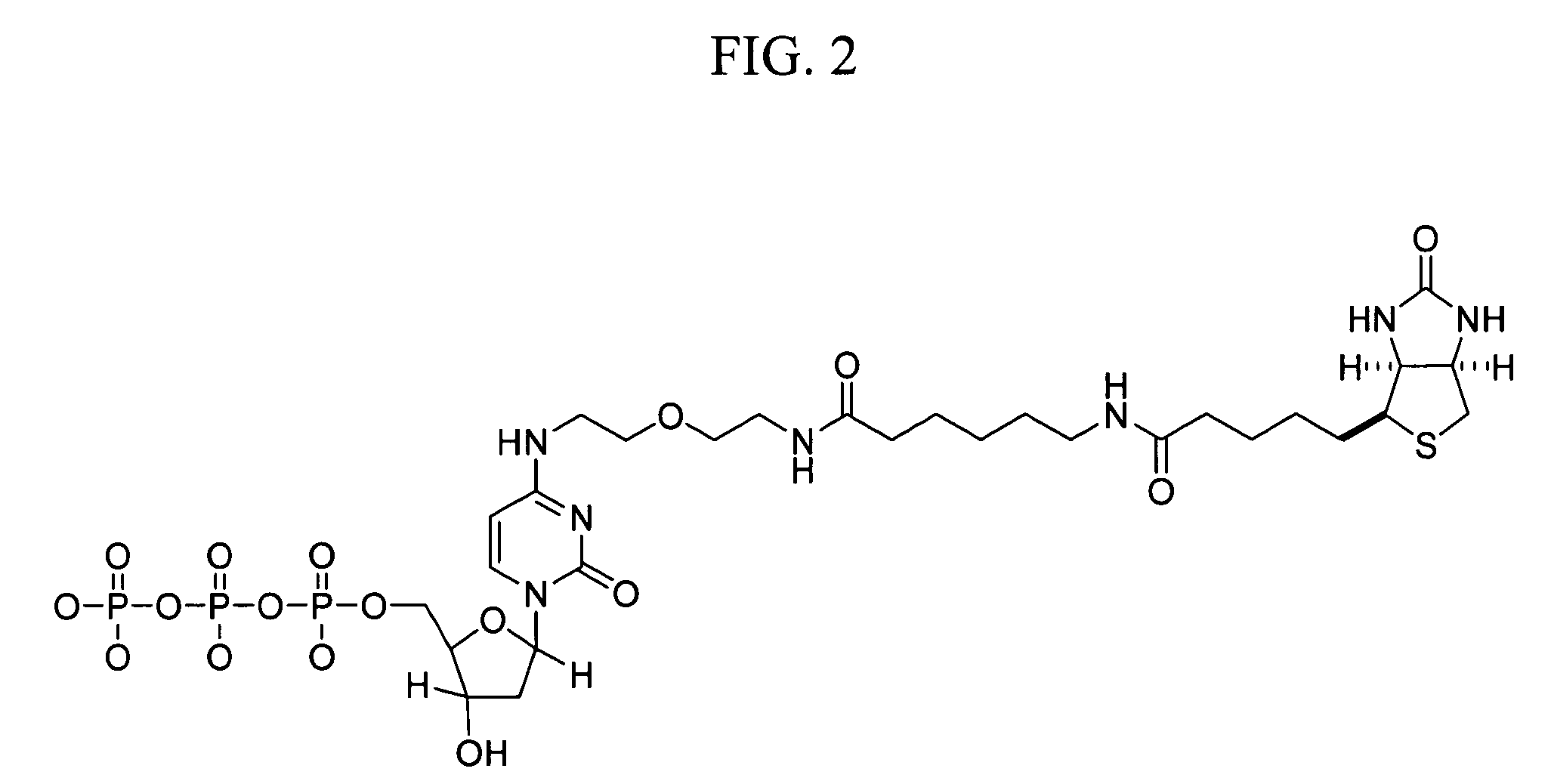Internal control for in situ hybridization
a technology of in situ hybridization and control, which is applied in the direction of microorganism testing/measurement, fermentation, biochemistry apparatus and processes, etc., can solve the problems of false negative diagnosis, unreliable results, and negative ish results obtained for a particular target probe to be viewed as unreliabl
- Summary
- Abstract
- Description
- Claims
- Application Information
AI Technical Summary
Benefits of technology
Problems solved by technology
Method used
Image
Examples
example 1
Preparation of Tissue and Cell Samples for Chromogenic In Situ Hybridization Analysis
[0041] Chromogenic in situ hybridization (CISH) analyses were performed using two human papilloma virus (HPV)-positive cell lines, CaSki (containing 200-600 copies of HPV 16) and HeLa (containing 10-50 copies of HPV 18), and one HPV-negative cell line (T24). Cell samples were fixed in 10% neutral buffered formalin, embedded in paraffin, and sectioned at 4-8 microns. Fixed cell samples were placed on Superfrost® Plus glass slides (VWR Scientific; West Chester, Pa.) prior to CISH analysis.
[0042] CISH analyses were also performed on cervical lesion cells of tissue biopsies and cervical smear samples prepared using commercially available liquid-based prep (LBP) systems from Cytyc Corp. (Boxborough, Mass.) and TriPath Imaging Inc. (Burlington, N.C.).
example 2
Preparation of Probes for Chromogenic In Situ Hybridization Analysis
[0043] HPV DNA probes for chromogenic in situ hybridization (CISH) analysis were prepared by cloning HPV DNA from genotypes 16, 18, 31, 33, 35, and 51 into plasmid vectors, as described in International Publication No. WO 00 / 24760.
[0044] Mitochondrial DNA probes for CISH analysis were prepared by PCR amplification using the Expand Long Template PCR System (Roche Molecular Biochemicals; Indianapolis, Ind.) and primers shown in Table I. Amplification reactions containing 500 μM of each dNTP, 5 units of Taq Polymerase, 0.3 μM of each primer, 50 mM KCl, 2.75 mM Mg2Cl, 10 mM Tris-HCl, pH 8.5, and a DNA template from the human cell line, C33A, were performed at 94° C. for 2 minutes for one cycle and at 94° C. for 10 minutes, 55° C. for 30 minutes, and 68° C. for 15 minutes for 35 cycles. Amplification products were separated on a 0.6% agarose gel and analyzed using an α-imager. Products having the expected size were obt...
example 3
Analysis of Nuclear and Mitochondrial DNA Targets by Chromogenic In Situ Hybridization Using Identical Haptens and Detection Systems
[0047] CISH analysis of nuclear and mitochondrial DNA targets using identical haptens and detection systems was performed as follows. CaSki and cervical lesion cells of tissue biopsies were prepared as described in Example 1. Samples included formalin-fixed / paraffin-embedded tissues, formalin-fixed / paraffin-embedded tissue culture cell pellets, fixed tissue culture cells on Cytospin-prepared slides, and fixed cervical cells prepared with using the ThinPrep Pap Test specimen collection system (Cytyc Corp.). HPV and mitochondrial DNA probes were prepared and labeled with biotin-dCTP by nick translation as described in Example 2.
[0048] CISH was performed on a BenchMark® automated slide stainer (Ventana Medical Systems, Inc.). The degree of hybridization between the HPV and mitochondrial DNA probes and their respective targets was determined using one of ...
PUM
| Property | Measurement | Unit |
|---|---|---|
| Fraction | aaaaa | aaaaa |
Abstract
Description
Claims
Application Information
 Login to View More
Login to View More - R&D
- Intellectual Property
- Life Sciences
- Materials
- Tech Scout
- Unparalleled Data Quality
- Higher Quality Content
- 60% Fewer Hallucinations
Browse by: Latest US Patents, China's latest patents, Technical Efficacy Thesaurus, Application Domain, Technology Topic, Popular Technical Reports.
© 2025 PatSnap. All rights reserved.Legal|Privacy policy|Modern Slavery Act Transparency Statement|Sitemap|About US| Contact US: help@patsnap.com



